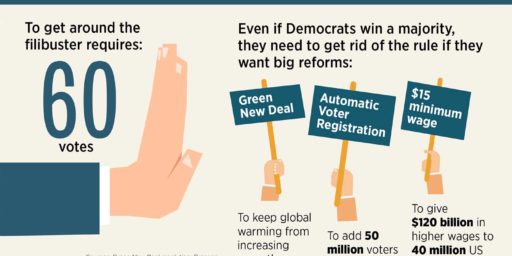On the “Minority Protection” Argument and Filibuster Reform
Many are going to assert that doing away with the filibuster for nominees is a blow against minority protection in the process. However, it has to be remembered and understood: the very nature of the Senate as designed is already minority protection. Since each state gets a co-equal number of seats in the chamber, the power of majority populations and sentiments are already diluted. Even operating under basic absolute majority rule (i.e., 51 votes) is a already a body that is not a purely majoritarian one given that an absolute majority of the votes in the Senate may very well represent a minority of the population.
Indeed, that was one of the purposes of the Senate: that the smaller states (as defined in population terms) would not lose all of their influence to the larger states. As such, minority protection is baked into the institution. It does not have to have a filibuster rule to protect minority interests.
More later, as time permits.






Agreed..
The 25 smallest states have, according to a quick and rough count, approximately 50 million people combined, or about one-sixth of the entire US population. However, those 16.6% of citizens get 50% of the votes in the Senate, giving them political power far disproportionate to their actual numbers.
By contrast, the citizens of the five largest states number over 100 million, or almost one-third of the US population. But that 33.3% of the US population only gets 10% of the votes in the Senate.
@Rafer Janders: That sounds about right. I had the number 18% in my head for the bottom half, but have not had time to confirm it as yet.
@Steven L. Taylor:
As I said, I did only a fairly rough eyeball count, but overall it’s about 16-18% total of the population for the 25 least populated states.
So even without the filibuster, the 25 smallest states representing 50 million people can balance or block the 25 largest states representing 250 million people. They have a 5-1 electoral advantage even in a pure “majority rules” Senate.